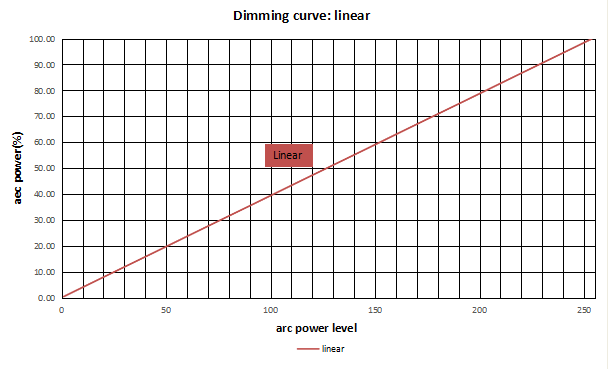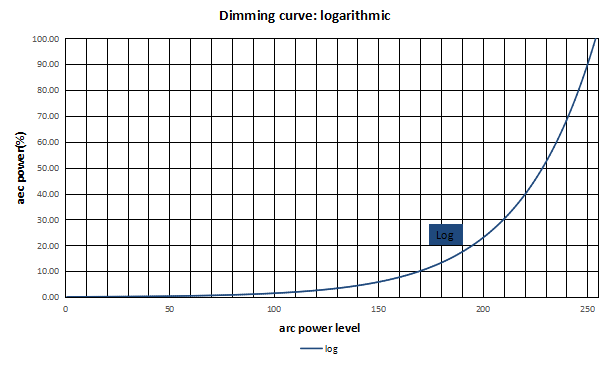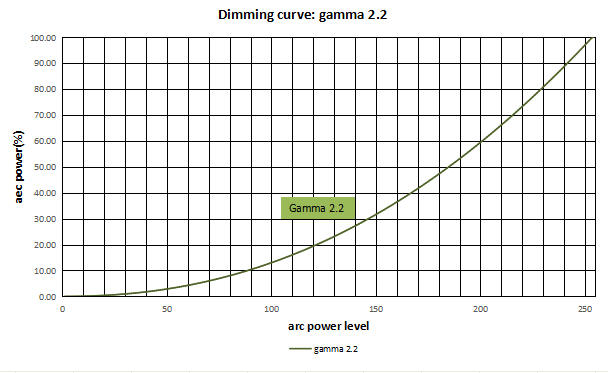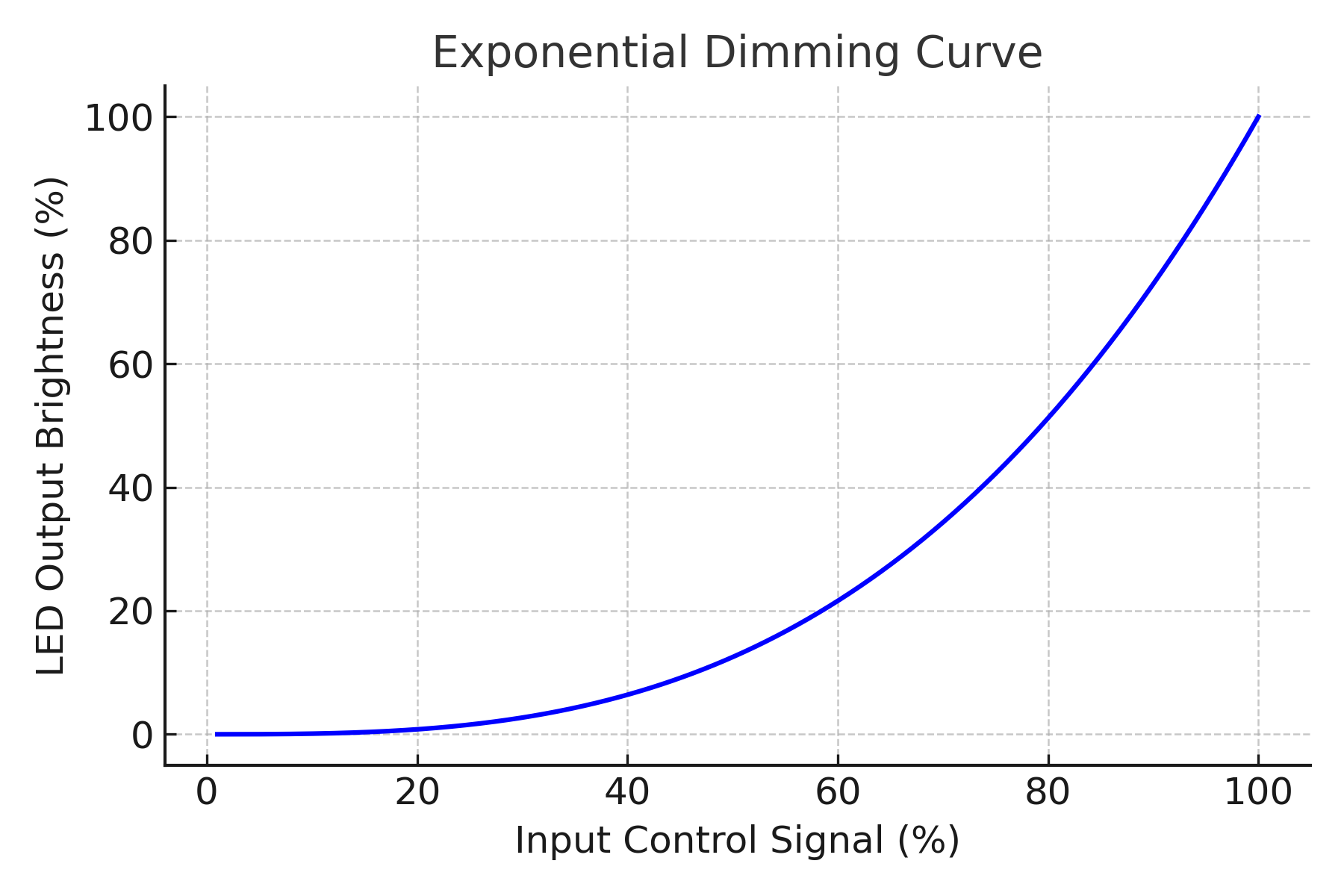After reviewing numerous smart lighting projects Suretron has supported, we've found that many clients encounter issues due to fundamental misunderstandings during the selection or use of LED driver power supplies. One of the most common issues is the improper setting of dimming curves, leading to flickering or abrupt brightness jumps.
Why does improper dimming curve configuration cause brightness jumps?
This is because human perception of brightness is nonlinear—our eyes are highly sensitive to small changes in low brightness areas, but much less so at high brightness levels. For example, increasing dimming from 10% to 20% may barely be noticeable, while a jump from 70% to 80% may feel sudden and jarring.
Using a linear dimming curve often results in little perceived change in the lower range, followed by a sharp increase in brightness in the higher range—affecting visual comfort.
At this point, many might ask: "What is a dimming curve, and why does it have such a major impact on lighting control?"
What is a dimming curve?
A dimming curve defines the relationship between lighting brightness and the control signal. It determines how the light responds as you adjust the dimmer.
A well-designed dimming curve aligns with the human eye’s natural perception of brightness, enabling smooth, natural light transitions. A poor dimming curve, however, can cause jerky or unresponsive dimming behavior.
Common Dimming Curve Types
Linear, Logarithmic, Gamma, Exponential
Linear Dimming Curve
In a linear dimming curve, the LED driver adjusts output brightness proportionally to the control signal.
If the control signal ranges from 0% to 100%, then under a linear curve, brightness also increases proportionally:
Control Signal 10% → Light Output 10%
Control Signal 50% → Light Output 50%
Control Signal 90% → Light Output 90%

Impact of Linear Curve
Although simple and cost-effective, the linear curve does not match the nonlinear response of human eyes, often resulting in unsmooth dimming or brightness jumps—not ideal for high-quality lighting applications.
Logarithmic Dimming Curve
This curve represents a logarithmic relationship between the control signal and light output. It offers smoother brightness transitions in low light levels and faster changes in higher ranges—better matching human perception.

Impact of Logarithmic Curve
Delivers a more natural, smooth, and perceptually accurate dimming experience.
Gamma Dimming Curve
Originally used in image processing for monitors and TVs, the gamma curve applies an exponential function to adjust brightness. It is now widely used in LED lighting for its ability to better match human visual sensitivity.
Impact of Gamma Curve
Accurately mimics the eye’s brightness perception curve, delivering seamless, natural dimming—ideal for premium lighting environments.

Exponential Dimming Curve
In this curve, brightness increases slowly at first and then accelerates—opposite to the logarithmic curve.
Impact of Exponential Curve
Brightness appears unresponsive in lower ranges and too fast in higher ranges—not ideal for comfort lighting but suitable for high-brightness needs such as warehouses, factories, or parking garages.

Comparison Table of Dimming Curves
Curve Type | Brightness Behavior | Perceptual Match | Advantages | Disadvantages | Applications |
Linear | Proportional input-output | Low | Simple control, low cost | Poor perceptual match, unsmooth dimming | Budget/basic lighting |
Logarithmic | Slow at low brightness, faster at high | High | Smooth dimming, perceptual accuracy | Slightly more complex implementation | High-end residential, art, retail |
Gamma | Smooth non-linear brightness | High | Best perceptual match, seamless control | Requires gamma-capable controller, higher cost | Professional, stage, studio lighting |
Exponential | Slow start, rapid increase at high levels | Low | Fast to full brightness | Uncomfortable dimming at low levels | Industrial, warehouse, parking |
Suretron's Constant Current Smart Drivers with Customizable Dimming Curves
Recognizing how crucial dimming curves are to lighting quality, Suretron developed a series of constant current smart dimmable drivers that support customizable dimming curves.
Before leaving the factory, Suretron preloads each driver with multiple dimming curve profiles tailored to various application needs. Users can easily switch between linear, logarithmic, exponential, and gamma curves via NFC—eliminating complex manual configurations while saving time and ensuring optimal dimming performance.
Built-in Curve Modes: Preconfigured with Linear / Logarithmic / Exponential / Gamma curves for diverse lighting needs.
NFC Smart Configuration: Switch curves easily without programming, saving time and effort.
Multi-Protocol Support: Fully compatible with DALI-2 / D4i / DMX512 / 0-10V protocols.
Wide Power Range: Covers 100W to 1800W, ideal for large-scale lighting like stadiums, factories, malls.
Multiple Series: Four product series—SDU / SDH / NDU / NDH—meet varying physical and functional requirements.

















